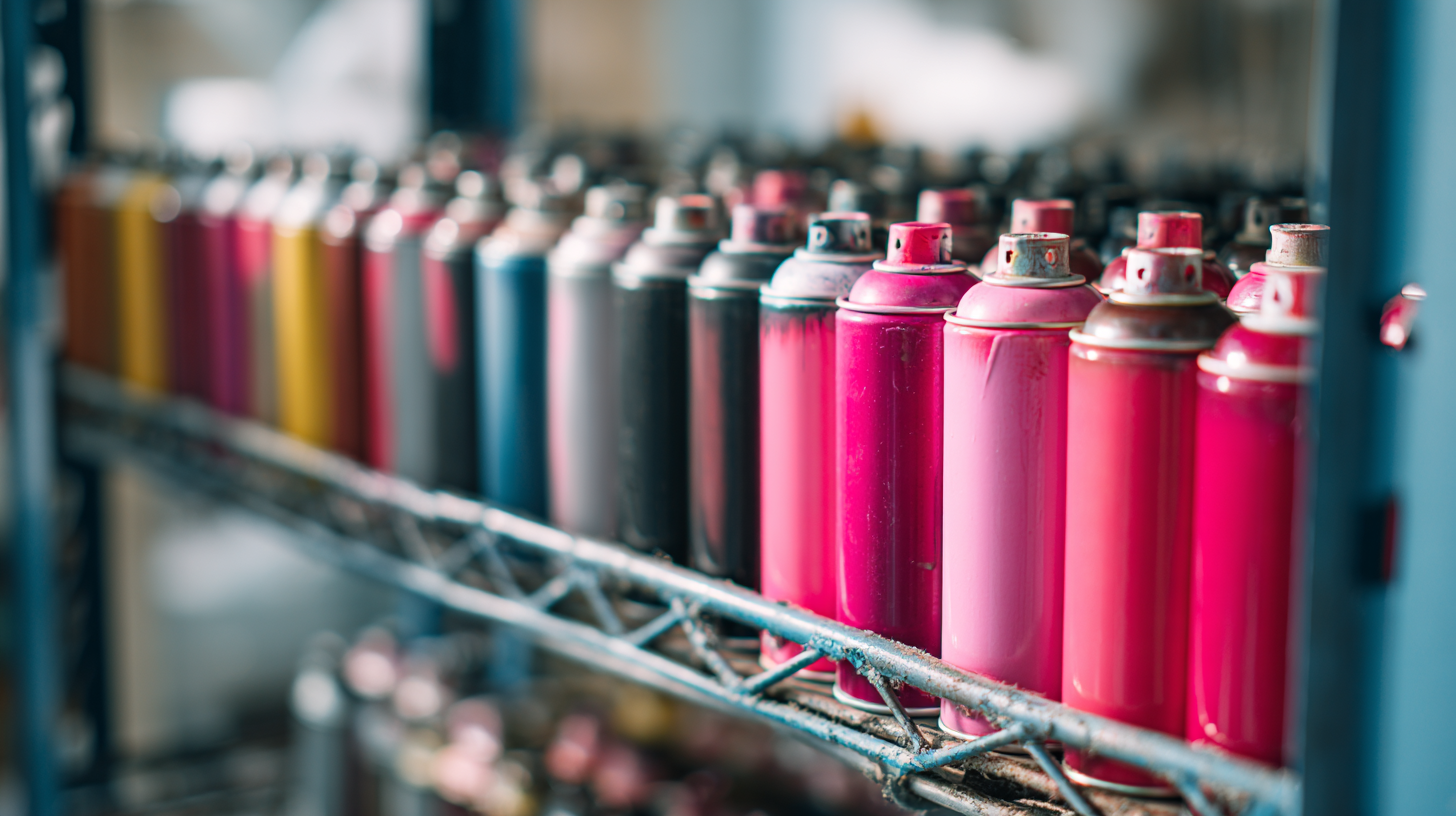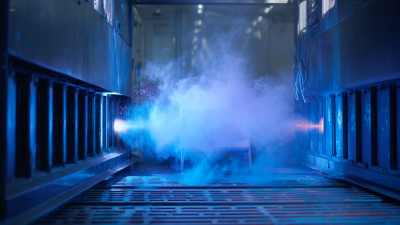As the popularity of DIY projects continues to rise, more enthusiasts are turning to at home powder coating as a way to achieve durable and professional-looking finishes on various items. According to industry expert John Smith, a leading figure in powder coating innovation, "At home powder coating is not just about the finish; it's about unleashing your creativity and transforming ordinary objects into extraordinary pieces." This comprehensive guide seeks to explore the essentials of at home powder coating, providing both novices and seasoned DIYers with the essential skills needed to embark on their powder coating journey.

In this guide, we will cover the fundamental techniques, equipment, and safety measures necessary for successful at home powder coating. From selecting the right powder coatings to mastering the application process, our aim is to equip you with the knowledge to elevate your projects with stunning, long-lasting finishes. Moreover, we will share valuable tips and tricks from seasoned professionals to help you avoid common pitfalls and maximize your results. Whether you’re looking to revive an old piece of furniture or customize automotive parts, the possibilities with at home powder coating are endless. Join us as we delve into the colorful world of powder coating and discover how to turn your creative ideas into reality.
 Powder coating is an innovative finishing technique that offers a durable and attractive surface for various home projects. Understanding the basics is essential for DIY enthusiasts looking to revamp furniture, appliances, or even automotive parts. Unlike traditional liquid paints, powder coating uses a dry powder that is electrostatically charged and applied to the surface, then cured under heat. This process results in a thick, hard finish that is significantly more resistant to scratching, chipping, and fading.
Powder coating is an innovative finishing technique that offers a durable and attractive surface for various home projects. Understanding the basics is essential for DIY enthusiasts looking to revamp furniture, appliances, or even automotive parts. Unlike traditional liquid paints, powder coating uses a dry powder that is electrostatically charged and applied to the surface, then cured under heat. This process results in a thick, hard finish that is significantly more resistant to scratching, chipping, and fading.
Recent trends indicate a surge in DIY home improvement projects, with the architectural coatings market experiencing substantial growth driven by renovations rather than new constructions. In fact, manufacturers report a marked increase in interest for home-based applications, suggesting that homeowners are looking to personalize their spaces. As per industry insights, the DIY market is contributing to a significant portion of architectural coatings sales, highlighting both the demand for high-quality finishes and the strategic shift toward home projects. With the right equipment and knowledge, anyone can achieve professional-looking results from the comfort of their garage or workshop.
 DIY powder coating is a transformative process that can enhance the durability and aesthetic of various items. To get started, it’s crucial to have the right tools and equipment. First and foremost, a powder coating gun is essential for applying the powdered paint uniformly. These guns use electrostatic charges to ensure the powder adheres to the metal surface effectively. In addition to a good gun, a compressed air source is needed to operate it efficiently, making an air compressor a vital component of your toolkit.
DIY powder coating is a transformative process that can enhance the durability and aesthetic of various items. To get started, it’s crucial to have the right tools and equipment. First and foremost, a powder coating gun is essential for applying the powdered paint uniformly. These guns use electrostatic charges to ensure the powder adheres to the metal surface effectively. In addition to a good gun, a compressed air source is needed to operate it efficiently, making an air compressor a vital component of your toolkit.
Another key element in DIY powder coating is the curing oven. This specialized oven needs to reach high temperatures, typically around 350°F to 400°F, to melt and cure the powder properly. If you're tight on space, many DIY enthusiasts adapt a standard kitchen oven for this purpose, but it’s important to ensure that the oven is designated only for curing as powder coating can create fumes that aren't safe for food. Lastly, don’t forget personal protective equipment such as masks and gloves, as safety should always be a priority when working with powders and chemicals.
Preparing surfaces before applying powder coating is crucial to achieving a durable and aesthetically pleasing finish. The first step in the preparation process is to thoroughly clean the surface. This involves removing any dirt, grease, oil, or rust that could hinder adhesion. Common cleaning methods include using a degreaser or a solvent wipe, followed by rinsing with water. For metal surfaces, sandblasting or using a wire brush can effectively eliminate impurities and create a rough texture that enhances bonding.

Once the surface is cleaned, it's essential to ensure it's completely dry. Moisture can lead to imperfections in the powder coating, such as bubbling or peeling. After drying, the next step is to inspect for any imperfections, such as dents or scratches, which should be repaired. Filling in these areas with a suitable filler and sanding them smooth is necessary for a flawless final result. With the surface properly prepared, the powder coating process can begin, leading to a professional-quality finish that is both attractive and long-lasting.
When it comes to achieving a flawless finish in DIY powder coating, applying the powder evenly is crucial. To start, ensure that your workspace is clean and free from dust and debris, as these can affect adhesion and the final appearance. An oven-like environment is ideal to cure the powder effectively. Using a suitable spray gun, set the correct pressure to create an even mist of powder, and practice on scrap material to hone your technique. The distance from the substrate matters; maintaining a consistent distance while spraying will help avoid uneven coverage and clumping.
Moreover, mastering the technique of moving the spray gun in smooth, sweeping motions can enhance the evenness of the coating. Overlapping passes slightly will ensure a uniform layer, preventing any missed spots. Keep in mind that the temperature of the part being coated can influence the powder's behavior; pre-heating the metal can enhance adhesion and allow for more even distribution. After application, inspect the coating for thickness, and if necessary, apply a second layer for improved coverage, ensuring each coat is fully cured before proceeding.
| Technique | Description | Advantages | Best Uses |
|---|---|---|---|
| Electrostatic Spraying | Utilizes electric charge to attract powder to the workpiece. | Provides even coating, minimizes waste. | Metal parts, intricate designs. |
| Manual Powder Application | Involves hand-held spray guns to apply powder. | Flexibility in application and less equipment needed. | Small scale projects, touch-ups. |
| Fluidized Bed Coating | Powder is fluidized and the item is dipped into it. | Uniform coating on complex shapes. | Housings, containers, and any shape requiring full coverage. |
| Dip Coating | The item is dipped into a tank of liquid powder. | Great for coverage and thickness control. | Small parts, quick production runs. |
| Spray Booth with Exhaust | Enclosed area with ventilation for spray application. | Reduces overspray and improves safety. | Larger projects, professional-level finishes. |
Curing and finishing are critical steps in the powder coating process that ensure durability and longevity of the coated surfaces. Proper curing transforms the applied powder into a tough, resilient finish that not only enhances appearance but also protects against various environmental factors. The global powder coatings market is projected to grow significantly, with estimates suggesting it could reach USD 30.46 billion by 2034. This growth is largely driven by the increasing use of powder coatings in key sectors such as automotive and consumer goods, where durability and aesthetic appeal are paramount.
Recent advancements, like low-temperature-curing technology, are expanding the potential applications of powder coatings while improving energy efficiency. This innovation addresses some of the common defects associated with traditional curing processes, helping to ensure that the final finish meets high standards of quality. As the industry continues to evolve, understanding these curing techniques and their effects on performance is essential for anyone looking to dive into DIY powder coating projects. By mastering these processes, individuals can achieve not only visually appealing results but also finishes that effectively resist scratches, heat, and other damage over time.






